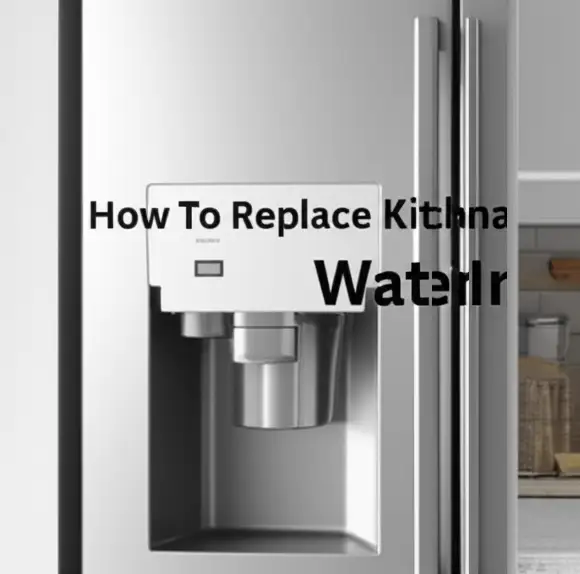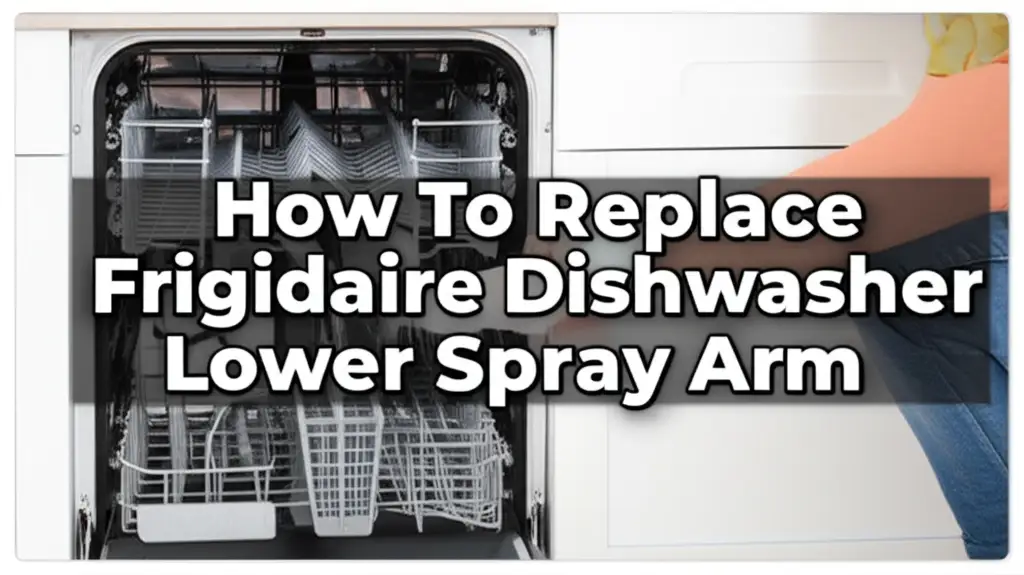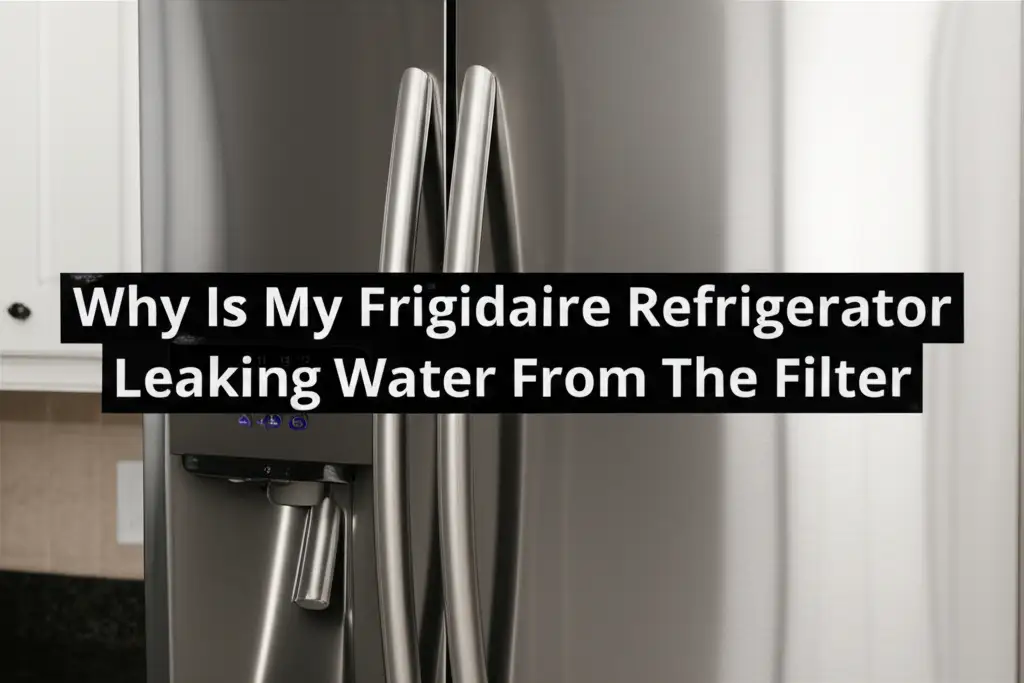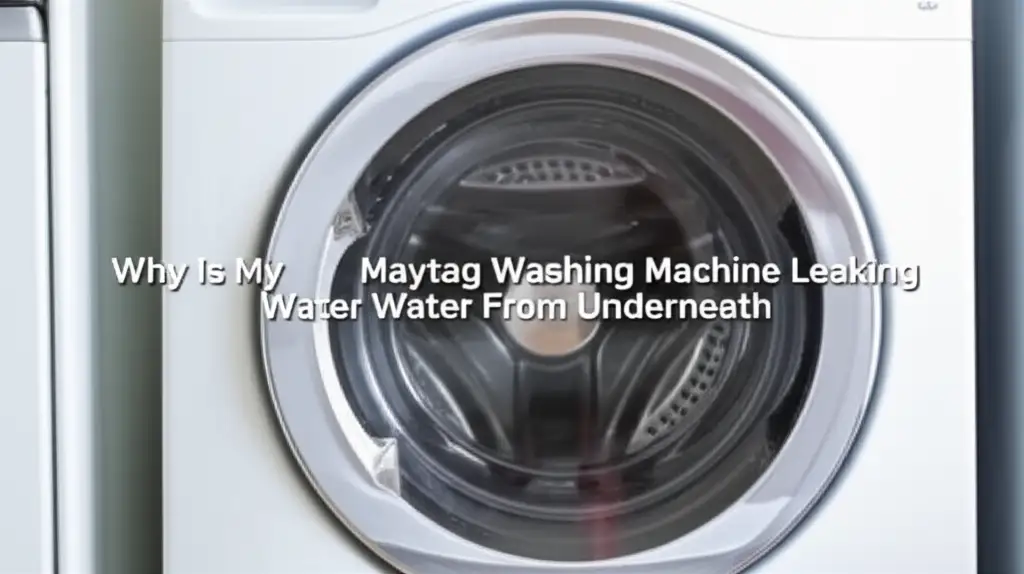· Todd Martin · Appliance Repair · 15 min read
How To Replace Kitchenaid Refrigerator Water Inlet Valve

Replacing Your KitchenAid Refrigerator Water Inlet Valve: A DIY Guide
Has your KitchenAid refrigerator stopped dispensing water or making ice? A faulty water inlet valve is often the culprit. This small but vital component controls the water flow to your dispenser and ice maker. When it fails, you face an inconvenient lack of water.
I know the frustration of a refrigerator that does not perform as expected. A broken water inlet valve can cause various issues, from no water at all to annoying leaks. Learning how to replace your KitchenAid refrigerator water inlet valve can save you money on service calls. This guide will walk you through each step. You can restore your refrigerator’s function yourself.
Takeaway
- Prioritize Safety: Always disconnect power and shut off water before starting any repair.
- Diagnose Correctly: Confirm the water inlet valve is the issue before ordering parts.
- Gather Tools: Have all necessary tools and the correct replacement part ready.
- Follow Steps: Work methodically through disconnection, replacement, and reassembly.
- Test Thoroughly: Check for leaks and proper function after the repair.
To replace a KitchenAid refrigerator water inlet valve, first disconnect power and shut off the water supply. Access the valve, typically at the back of the unit. Disconnect water lines and electrical connections. Install the new valve, reconnect everything, and check for leaks before restoring power.
Understanding the KitchenAid Refrigerator Water Inlet Valve
The water inlet valve on your KitchenAid refrigerator plays a crucial role. It acts as a gatekeeper for the water supply. This electrically operated valve opens to allow water into the refrigerator. This water then goes to the ice maker and the water dispenser.
When you press the dispenser lever, or when the ice maker needs water, a signal activates the valve. The valve contains solenoids that open or close ports. Water flows through these ports under household pressure. If this valve malfunctions, water flow stops or becomes uncontrolled.
A common issue is a valve that fails to open. This results in no water from the dispenser or no ice production. Sometimes, the valve might stick open, causing continuous water flow or leaks. It might also hum loudly, which signals internal problems. Understanding its function helps you diagnose problems effectively. Proper diagnosis saves time and ensures you replace the correct component.
Common Signs Your KitchenAid Water Inlet Valve Is Failing
Identifying a failing water inlet valve early can prevent bigger problems. Your KitchenAid refrigerator will often show clear signs. Pay attention to these indicators. They can point directly to the valve as the source of trouble.
One primary sign is a lack of water from the dispenser. You press the lever, but no water comes out. This often means the valve is not opening. Similarly, if your ice maker stops producing ice, the valve might be at fault. The ice maker needs water to fill its molds. If it gets no water, it makes no ice.
Leaks are another big indicator. Water might drip or pool under the refrigerator. A valve can develop cracks or internal leaks. Sometimes, the connections to the valve loosen. This leads to water seeping out. For a detailed look at common KitchenAid leaks, you might read about why a KitchenAid refrigerator leaks water from the bottom. Strange noises also suggest a problem. A buzzing or humming sound from the back of the refrigerator, especially when the dispenser is activated, indicates a failing solenoid within the valve. These noises mean the valve is struggling to operate correctly.
Essential Tools and Parts for Valve Replacement
Before you start any repair, gather all necessary tools and the correct replacement part. Having everything ready saves time and frustration. It ensures a smooth process. You do not want to stop mid-repair to search for a missing item.
First, you need the right replacement water inlet valve. KitchenAid models vary, so check your refrigerator’s model number. You can find this on a sticker inside the fridge compartment or behind the kick plate. Order the exact part number for your specific model. Using an incorrect part can cause more damage or not fit at all.
Your tool kit should include basic items. A Phillips head screwdriver and a flathead screwdriver are essential. You will need a nut driver or a small wrench set, usually 1/4 inch and 5/16 inch sizes. Pliers, especially needle-nose pliers, can help with hose clamps or tricky connections. You will also need a utility knife or tubing cutter if you need to trim water lines. Always have towels or a small pan ready to catch any residual water. This prevents spills and makes cleanup easy. Preparing your workspace properly is key to a successful repair.
Safety First: Disconnecting Power and Water
Safety is paramount when working with appliances. Ignoring safety steps can lead to electrical shock or water damage. Always begin your repair by ensuring the refrigerator is completely de-energized and its water supply is off. This protects both you and your home.
Start by unplugging the refrigerator from the wall outlet. This is the most direct way to cut off electrical power. Simply turning off the refrigerator at its control panel is not enough. You need to physically remove the plug. If the plug is inaccessible, locate your home’s circuit breaker panel. Turn off the breaker that powers your kitchen outlets. Double-check that the refrigerator is indeed off before proceeding.
Next, locate the water shut-off valve for your refrigerator. This valve is usually found behind the refrigerator or under the sink nearby. Turn the handle clockwise until it is completely closed. After turning off the main water supply, dispense any remaining water from the refrigerator’s dispenser. This relieves pressure in the water line and empties any water trapped in the system. Place a towel or small bucket under the dispenser to catch any drips. These steps ensure a safe working environment.
Locating and Accessing the Water Inlet Valve
Finding the water inlet valve on your KitchenAid refrigerator is usually straightforward. It is typically located at the lower back of the unit. You will need to move the refrigerator away from the wall to access it. Make sure you have enough space to work comfortably behind the appliance.
Most KitchenAid refrigerators have a removable back panel. This panel protects the internal components and holds the wiring. Use your Phillips head screwdriver or nut driver to remove the screws securing this panel. Once the screws are out, carefully lift or slide the panel away. You will then see the various components.
The water inlet valve is usually a small, rectangular or square component. It has one water line entering it and one or two lines exiting. Electrical wires also connect to it. It is often secured with a few screws. The main water supply line, usually a copper or plastic tube, will lead directly into it. Once you identify the valve, you are ready to start the disconnection process. Accessing the valve correctly is the first physical step of the replacement.
Disconnecting the Old Water Inlet Valve
With the back panel removed and the valve located, you can begin disconnecting the old unit. Take photos with your phone before you disconnect anything. This helps you remember where each wire and hose connects for reassembly. These visuals are a lifesaver if you get confused.
First, identify the electrical connections. These are usually plastic connectors that plug onto terminals on the valve. Gently squeeze the tabs or pull them directly off the terminals. Do not pull on the wires themselves, as this can damage them. Labeling wires with tape helps keep track if there are multiple similar connections.
Next, disconnect the water lines. There will be one main supply line coming into the valve. There will also be one or two lines leaving the valve and going to the ice maker and dispenser. Some lines use compression fittings. You will need a wrench to loosen the nuts. Other lines might use push-to-connect fittings. For these, press a collar firmly against the valve body while pulling the tube out. Be prepared for a small amount of residual water to escape from the lines. Have your towels ready. Once all connections are free, unscrew the mounting screws that hold the valve in place. Carefully remove the old valve from the refrigerator.
Installing the New KitchenAid Refrigerator Water Inlet Valve
Now you are ready to install the new water inlet valve. This step is essentially the reverse of the disconnection process. Work carefully to ensure all connections are secure and leak-free. Proper installation prevents future problems.
First, position the new valve in the same spot where the old one was. Secure it with the mounting screws. Make sure it is firm and does not wobble. Next, reattach the water lines. If your lines use compression fittings, ensure the compression nut and ferrule are correctly seated. Tighten the nuts firmly but do not overtighten. Over-tightening can crack the valve body or damage the line. For push-to-connect fittings, simply push the tubing firmly into the valve until it stops. Give a gentle tug to ensure it is secure.
Finally, reconnect the electrical wiring. Refer to your photos if you took them. Match the connectors to their correct terminals on the new valve. Ensure each connection snaps firmly into place. A loose electrical connection can prevent the valve from functioning or cause intermittent issues. Double-check all connections—water and electrical—before closing up the refrigerator. This step is critical for successful operation.
Testing Your New Valve and Checking for Leaks
After installing the new water inlet valve, testing is crucial. You want to make sure everything works correctly and there are no leaks. This prevents water damage and confirms your repair. Do not skip this step.
Before replacing the back panel, slowly turn the water supply back on. Go to the main water shut-off valve and open it fully. Listen for any immediate hissing sounds or visible drips around the new valve connections. Use a flashlight to inspect all joints closely. If you see a leak, turn off the water immediately and re-tighten the fitting. Sometimes, a slight adjustment is all it needs. For problems testing refrigerator water valves, you might find specific guidance on how to test a Samsung refrigerator water inlet valve or how to test an LG refrigerator water inlet valve, as the principles are similar.
Once you confirm no leaks are present, plug the refrigerator back into the power outlet. Go to the front of the refrigerator and test the water dispenser. Dispense several cups of water to flush any air from the lines. Let the ice maker cycle through a batch of ice. This ensures it is receiving water. Continue to monitor the valve area for a few minutes after the initial tests. Any slow drips will become apparent. This thorough testing guarantees your repair holds up.
Reassembling Your KitchenAid Refrigerator
After confirming the new water inlet valve works and there are no leaks, you can reassemble your KitchenAid refrigerator. This brings the repair to a close. Take care during this final step to secure everything properly.
First, replace the back access panel. Align the panel with the screw holes. Insert and tighten all the screws you removed earlier. Do not overtighten them, as this can strip the screw holes or crack the panel. Ensure the panel sits flush against the refrigerator body. This protects the internal components from dust and damage.
Once the back panel is secure, carefully push the refrigerator back into its original position. Be mindful of the water line and power cord behind the unit. Make sure they do not get kinked or pinched against the wall. Leave enough space for proper ventilation. Your refrigerator needs airflow to operate efficiently. Take a moment to clean the area behind and under the refrigerator. This is a good opportunity to remove any dust buildup. Now, your KitchenAid refrigerator is fully functional again.
Maintaining Your Refrigerator’s Water System
Regular maintenance helps prevent future issues with your refrigerator’s water system. A little care goes a long way in prolonging the life of components like the water inlet valve. Proactive steps can save you from future repairs.
One key maintenance item is regularly changing your water filter. A clogged filter can restrict water flow. This puts extra strain on the water inlet valve and other components. Follow the manufacturer’s recommendations for filter replacement. You might wonder, can you use your KitchenAid refrigerator without the water filter? While technically possible, it is not recommended for water quality or system health.
Inspect the water lines periodically for kinks or signs of wear. Ensure all connections remain tight. Even a slight leak can worsen over time. Occasionally, check the area behind the refrigerator for any signs of moisture or dripping. Keeping the area clean and dust-free also aids in overall appliance health. These simple checks help maintain peak performance. Consistent maintenance will keep your water system running smoothly for years.
When to Call a Professional
While replacing a KitchenAid refrigerator water inlet valve is a manageable DIY task, there are times when professional help is best. Knowing your limits can prevent further damage or injury. Do not hesitate to call an expert if you encounter certain situations.
If you are uncomfortable with any step of the process, or if you lack the necessary tools, a professional can complete the job safely. Dealing with water and electricity requires confidence and care. If you have followed all the diagnostic steps and still cannot pinpoint the issue, a technician has specialized equipment to troubleshoot. Complex electrical issues or problems with multiple components might be beyond a simple DIY fix.
If, after replacing the valve, your refrigerator still shows the same symptoms, or new problems arise, it is time for professional assistance. This indicates the valve was not the sole problem, or another issue emerged. For instance, if you replaced the water valve on a Frigidaire refrigerator but it still leaks, you’d call a pro. A qualified appliance technician can diagnose complex issues accurately. They ensure your KitchenAid refrigerator operates safely and efficiently. Investing in professional repair when needed is wise.
Troubleshooting Common Water System Problems
Even after replacing the water inlet valve, you might encounter other water system issues. Understanding basic troubleshooting steps helps you address them. Many problems have simple solutions.
If your water dispenser still provides no water, check the water pressure from your home’s main supply. Low water pressure affects the refrigerator’s ability to dispense water. Ensure the water shut-off valve behind the fridge is fully open. A partially closed valve will restrict flow. Also, check for kinks in the water line connecting to the refrigerator. A bent hose can stop water flow.
If the ice maker is not producing ice, confirm the ice maker arm is in the “down” or “on” position. Sometimes, it gets accidentally flipped up. Also, check the freezer temperature. If the freezer is too warm, ice will not form properly. A very common issue is a clogged water filter. Even if relatively new, a filter can sometimes prematurely clog. Replacing the GE side-by-side refrigerator water filter follows similar principles of ensuring clear water flow. Regularly changing your water filter is critical. These steps can often resolve common issues.
FAQs About KitchenAid Refrigerator Water Inlet Valve Replacement
What causes a KitchenAid refrigerator water inlet valve to fail?
Several factors cause a KitchenAid water inlet valve to fail. Mineral deposits from hard water can build up inside the valve. This restricts water flow or prevents the solenoids from opening fully. Electrical surges can damage the solenoids, making them unresponsive. General wear and tear over time also leads to valve failure.
How do I know if my KitchenAid refrigerator needs a new water inlet valve or just a repair?
You likely need a new valve if you have no water or ice, or if there is a continuous leak. Repairing a valve is rarely an option. The components inside are often sealed. A buzzing noise suggests a failing solenoid. Replacement is almost always the solution for a faulty valve.
Can I replace the water inlet valve myself if I’m not very handy?
Yes, many homeowners can replace this valve. The process involves basic tools and following clear steps. Safety is paramount. If you can follow instructions carefully, you can likely do this. Always ensure power and water are off before starting.
How long does it take to replace a KitchenAid refrigerator water inlet valve?
Replacing the valve typically takes about 30 to 60 minutes. This includes time for unplugging the unit and shutting off the water. The actual replacement of the valve is quick. Testing for leaks and reassembly adds a little more time.
What is the average cost to replace a KitchenAid refrigerator water inlet valve?
The average cost for the part itself ranges from $50 to $150, depending on your KitchenAid model. If you hire a professional, labor costs can add another $100 to $300. Doing it yourself saves a significant amount on labor.
Does replacing the water inlet valve fix ice maker problems?
Yes, replacing a faulty water inlet valve often fixes ice maker problems. If the valve does not open, the ice maker receives no water. This stops ice production. A new, working valve restores the water supply. It allows the ice maker to function normally again.
Conclusion
Replacing the KitchenAid refrigerator water inlet valve is a manageable task for most homeowners. You can restore your appliance’s function and avoid expensive service calls. We covered everything from diagnosing the problem to performing the repair. Remember to prioritize safety by disconnecting power and water.
Gather your tools and the correct replacement part. Take your time during each step of disconnection and reassembly. Thoroughly test for leaks before pushing the refrigerator back into place. Regular maintenance will help keep your water system in top condition. You now have the knowledge and confidence to tackle this common repair. Take action and enjoy fresh water and ice once again!
- KitchenAid refrigerator repair
- water inlet valve replacement
- DIY appliance fix
- refrigerator maintenance
- leaky refrigerator





